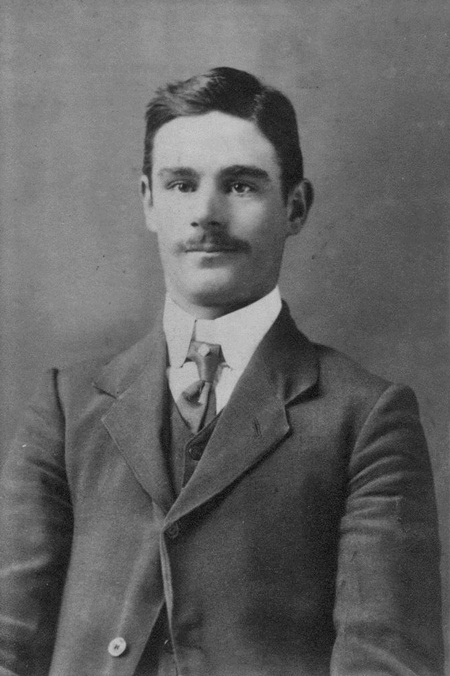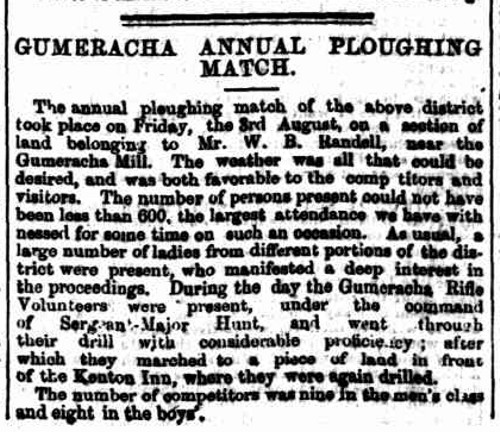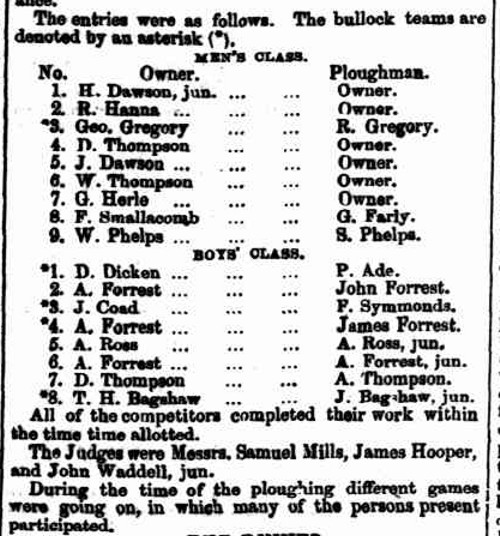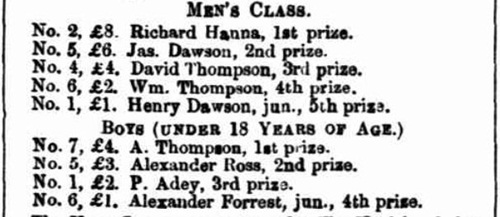Hit By Two Cars, Neither Drivers Stopped
Tuesday … so it’s Trove Tuesday time. And again Trove has come up with an amazing tid-bit relating to my family. Ok, technically it’s Mr Lonetester’s family, but you get the point. And again it’s something I never would have thought of (of known about) if it wasn’t for the wonders of Trove.
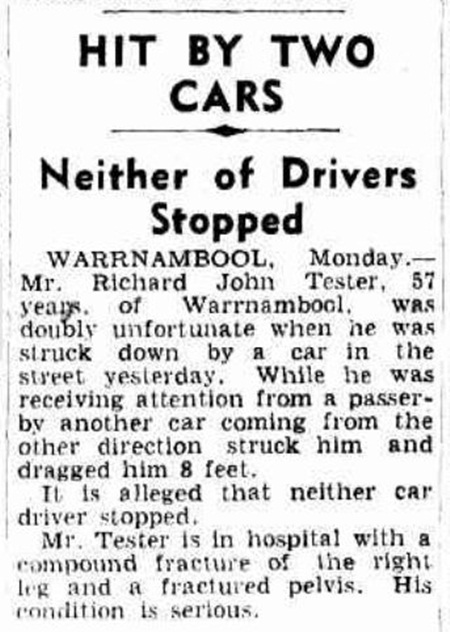
The Age, 8 July 1947, p.3.
http://nla.gov.au/nla.news-article206033519
I will admit I haven’t done a whole lot of research on this side of the family, so am still learning a lot as I go, however I do know that Richard John Tester survived this accident and lived on for another 20 odd years, and is buried in the Warrnambool Cemetery in Victoria, Australia.
Trove Tuesday: Gumeracha’s Annual Ploughing Match in 1860
Oh how times have changed. I must say that the thought of going to a ploughing match really doesn’t excite me, but obviously it was a different time back in the mid-1800s when Gumeracha’s Annual Ploughing Match held, and it was certainly something to look forward to, as it brought out the whole town plus more!
Browsing on Trove certainly brings up a bunch of articles relating to Gumeracha’s Annual Ploughing Match. This seems to have started in 1850 or there abouts, and continued at least until the 1890s. Anyway I’ve chosen to share the one from the South Australian Weekly Chronicle, dated 11 August 1860.
As the article mentions it was held on land owned by William Beavis Randell, near the Gumeracha Mill (now Randell’s Mill B&B), and over 600 people attended! Even the Gumeracha Rifle Volunteers were there, and went through their drill. It must have been quite an event.
There were 9 men competing, and 8 boys, and they were …
And the winners were …
The article is a long one, and goes on to discuss the dinner and speeches that were held afterwards. If you wish to read the full article you can find it here.
After reading the article, I must say I’ve changed my mind, and I’d love to see what a ploughing match is like. But I mean one back then, not one now. It was truly a different way of life back then.
One Obituary, So Many Clues
Obituaries (aka obits) are fabulous if you can find them. While browsing around on Trove (aka Troving) recently I came across this obit for Private Charles Spurgeon McCullough. This gent is one of my great grandma’s (Dorothy McCullough) brothers – so that makes him my great grand uncle.
It’s not a long one in comparison to some – but you really have the be in awe of the detail that this obit includes.
While this is a great read for anyone (family or not), for this post I have decided to extract each detail one-by-one to highlight just how valuable an obituary really can be. And while newspapers may not be 100% accurate, they can be used as a guide.
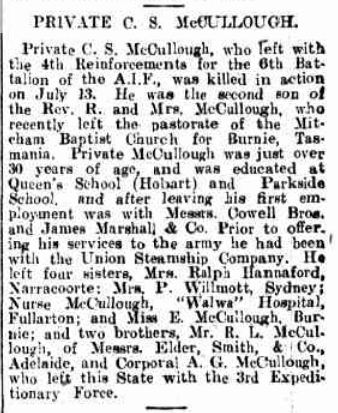
Australians in Action, Roll of Honour
PRIVATE C. S. McCULLOUGH, 14 August 1915 Chronicle, p. 42.
http://nla.gov.au/nla.news-article89149212
So let’s start …
- we know his name – the article names him as C.S. McCullough – no it doesn’t give his actual name, but it doesn’t just list him as Private McCullough or Mr C. McCullough either. It has both initials, so that’s a bonus.
- and says that he was in the Australian army and in which battalion – the article lists him as a Private in the army “who left with the 4th Reinforcements for the 6th Battalion of the A.I.F.”
- we learn his position in the army – “Private C.S. McCullough”
- this was in World War 1 – the newspaper date was in 1915
- the date of his death – the article lists his date of death as 13 July
- no year of death given but it is inferred that it is the same year as the newspaper (1915)
- he has an older brother as he is listed as “the second son”
- his parents are listed as Rev. R. and Mrs McCullough
- his father’s title is Reverend – so his father is a minister
- it also mentions where his father was a minister – Mitcham, [South Australia] and Burnie, Tasmania – “recently left the pastorate of the Mitcham Baptist Church for Burnie, Tasmania.”
- and that his family has recently moved to Tasmania
- it mentions which religion – Baptist
- his age is mentioned – “just over 30 years of age”, based on that we can assume he would have been born around 1885
- his education is mentioned – “was educated at Queen’s School (Hobart) and Parkside School” [South Australia]
- this also give clues as to where the family was living – Adelaide and Hobart
- his employment is also mentioned – “employment was with Messrs. Cowell Bros. and James Marshall & Co. Prior to offering his services to the army he had been with the Union Steamship Company.”
- he had four sisters, two were married, two not
- the sisters are all listed with their place of residence at the time (1915) – “He left four sisters, Mrs. Ralph Hannaford, Narracoorte; Mrs. P. Willmott, Sydney; Nurse McCullough, “Walwa” Hospital, Fullarton; and Miss E. McCullough, Burnie
- one of his sisters was a nurse
- and she worked at the “Walwa” Hospital, at Fullarton, South Australia
- C.S. McCullough also had two brothers – “Mr. R. L. McCullough, of Messrs. Elder, Smith & Co., Adelaide, and Corporal A.G. McCullough,
who left this State with the 3rd Expeditionary Force.”
- one of who worked for Elder, Smith & Co. in Adelaide
- and the other was also in the A.I.F., and fought with the 3rd Expeditionary Force.
- his brother, A.G. McCullough was living in South Australia prior to serving in the A.I.F.
So you see just how much information can be gleaned from just one obituary. And based on this info, there’s a lot here that can be followed up on – military records, ministry records, school records, and employment records for numerous family members. Possibly even land records and local history for the area the family lived and/or worked.
Here’s hoping for more family obits!!
South Australia’s Record Breaking Heatwave
At present Adelaide is the middle of another heatwave, we’re melting on our third day of over 40°C. It is one of those “burn-the-moment-you-step-outside” type of heatwaves. The “burn-yourself-on-the seatbelt” type heatwaves. On the plus-side this weather is absolutely fabulous getting your washing dry, though you will get sunburnt while you’re hanging it out.
While South Australia usually gets one or two heatwaves a summer, they usually hit later in summer. So to say that is has hit us all rather unawares, is an understatement!
For those who come from the colder parts of the world (ie. everywhere else), I just wanted to claify what a “heatwave” is defined as. The Bureau of Meteorology define it as “three or more days of unusually high maximum and minimum temperatures in any area”. Which is similar to my understanding of it, which is that it was a run of three consecutive days with the temperature 35°C or higher.
But hot weather in Adelaide is nothing new. A quick look on Trove comes up with numerous articles which mention the “record breaking” weather.
And while it hit 45°C the other day, it has been higher than that back in 1939!
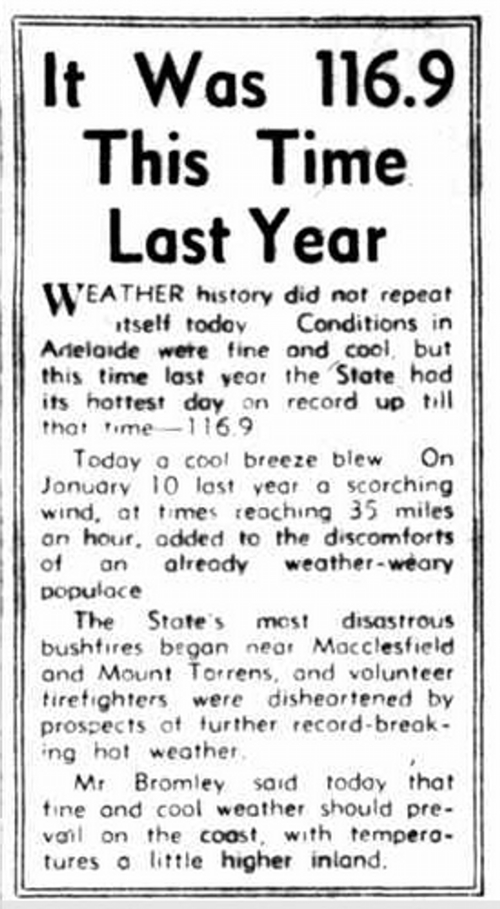
News 10 January 1940
http://nla.gov.au/nla.news-article131551907
A quick check on the fahrenheit to celsius converter tells me that 116.9°F is 47°C. So yes, that’s most certainly M-E-L-T-I-N-G weather!!
And just think … back in 1939 they wouldn’t have had all the comfort that we do with air conditioners in our house, car, workplace, shopping centres etc. So think what it would have been like back then.

